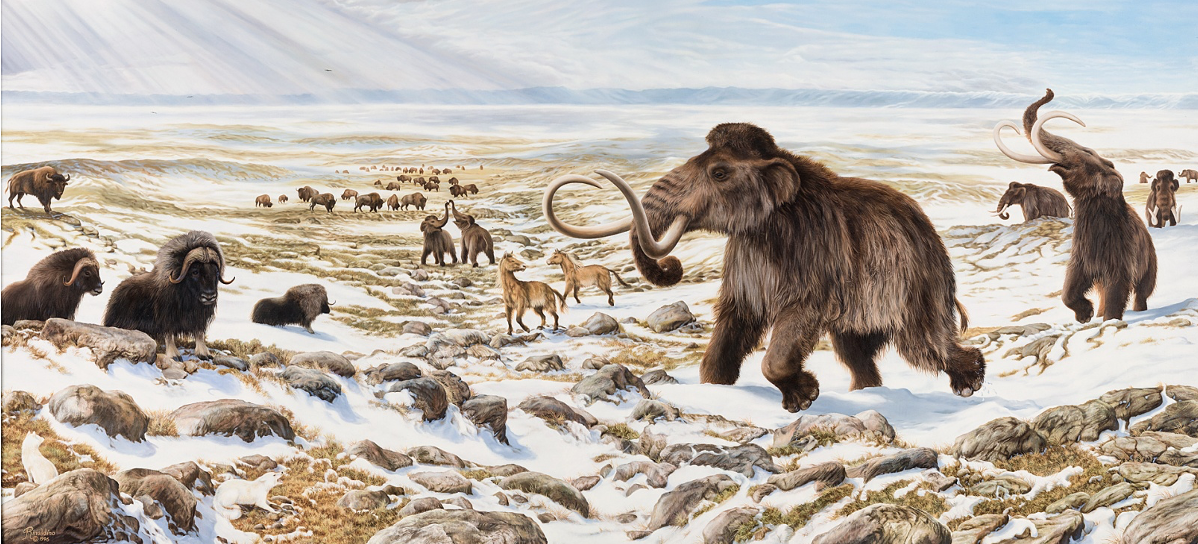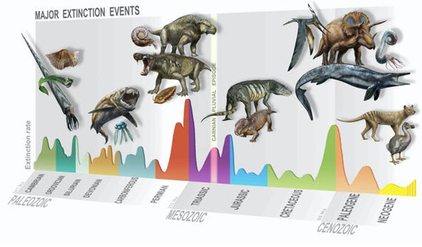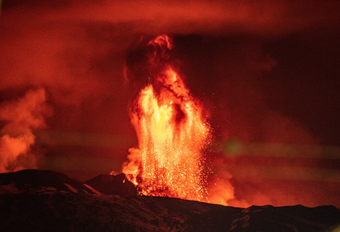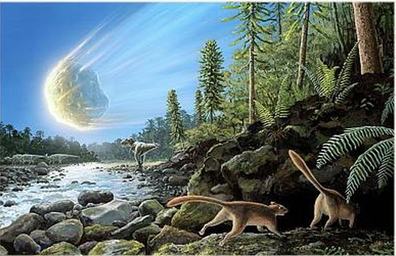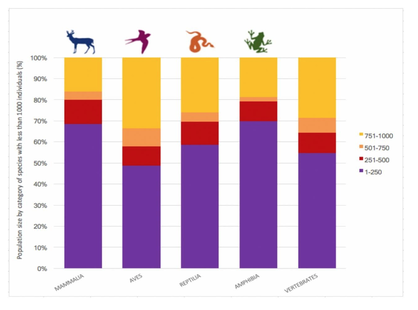|
The five major Mass Extinctions around 65 million years ago that wiped over three-quarters of the planet’s species is old news now, and we made peace with the fact that “nothing lasts forever.” Species are bound to go extinct, as proposed by Charles Darwin. It is part of the evolutionary life cycle to adapt to diverse ecological niches on the Earth. The extinction of one or more species favors the evolution of other species. What is alarming is that we are dealing with another Mass Extinction for which we are responsible. Scientists are calling it the Anthropocene Extinction, because it is caused by anthropogenic factors. Mass Extinction Life exploded and flourished on Earth during the Cambrian period around 540 million years ago. Since then, five catastrophic mass extinctions have occurred on the planet. The fact that makes the demise of awe-inspiring dinosaurs noteworthy is about 75% of flora and fauna thriving in the same period was also wiped out in the geological blink of an eye; the event which scientists refer to as a Mass Extinction. Yet, it made room for mammals and birds to diversify and evolve. A Mass Extinction is an event when the former species’ demise outpaces the new species’ evolution. Rather than a gradual shift in the evolutionary cycle, it occurs all of a sudden. Mass Extinction reflects the loss of three-quarters of the world’s species over a specific geological period. Evidence suggests that the fossils abundant in earlier rocks that are suddenly absent in the later rock layers indicates a Mass Extinction. The driver of these events is the disruptions in the Earth’s carbon cycle due to igneous eruptions that resulted in the elevated concentrations of heat-trapping greenhouse gases that lead to a myriad of changes in the atmospheric chemistry, inducing global warming and ocean acidification. A paleontologist from the Melbourne Museum also remarks that the mass extinctions are associated with rapid climate change. However, the most-studied Cretaceous-Paleogene extinction was an exception among all. It was caused by an asteroid, as stated by Alvarez’s hypothesis. Each event had its impetus, but all of them reshaped the diversity of life forms on Earth through each geological period. Let’s breakdown the previous five Mass Extinctions, and see why they are considered the benchmark for the Sixth Mass Extinction... Breakdown of the Five Extinctions1-Ordovician-Silurian Extinction; 440 million years ago. The first-ever mass extinction struck at the end of the Ordovician period, characterized by life in the sea, about 440 million years ago. It wiped out over 85 percent of all marine invertebrates, including hard-shelled brachiopods, bivalves, Conodonts, Trilobites, and Corals. It was initiated by the planetary glaciations. The climatic shift was triggered by an uplift of North American Appalachians that consumed atmospheric carbon dioxide and resulted in a cooling planet. The marine organisms had a major blow from sea level drop, having their habitat cooled and shrunken. Many species adapted to this pulse succumbed to another factor, the planetary warming when sea level started to rise but the oxygen levels dropped. Sea sponges thrived in the aftermath of the End-Ordovician. They stabilized sediment and created a favorable environment for brachiopods and other marine species. 2-Devonian Extinction; 360 to 380 million years ago. Spawning for twenty million years, the Devonian Extinction is attributed to two of the many significant events/pulses; the Kellwasser Event and the Hangenberg Event. Both these events contributed to a 75% loss in biodiversity on Earth. During the Kellwasser pulse, the oxygen levels dropped to the limits that choked out life from coral reefs, sea sponges, and conodonts in today's Germany. Another major event was the volcanic eruption of the Viluy Traps in, what is now Siberia, that caused acid rain. Other theories put forward include global cooling due to reduced atmospheric carbon content owing to the forested lands and a major asteroid attack. The newly burgeoning plants were furnished with many adaptive techniques, including lignin for stem-strengthening and a deep-rooted vascular system. These traits allowed them to penetrate deeper into the soil leading to weathering of rocks. Many nutrients funneled down the oceans and caused algal bloom. The decaying algal bloom deprived bottom dwellers of the dissolved oxygen leading to mass extinction. Like the late Ordovician extinction, many marine invertebrates bit the dust, such as diverse Trilobites and Conodonts. Especially reef-building corals were wholly devastated and took 120 years to recover. Vertebrate armored fish, placoderms also went extinct. Tetrapods that were in transition from sea to land survived the brunt of the extinction. They were likely to evolve into reptiles, amphibians, and mammals. 3-Permian-Triassic Extinction; 250 million years ago. Known as the Great Dying, this was the largest and deadliest mass extinction in the world’s history, is the Permian-Triassic extinction. The Trilobites that managed to survive the first two mass extinctions vanished off the Earth entirely. It struck a massive blow to over 95 percent of marine biodiversity and about 75 percent of vertebrates. Gradual climate change followed by a cataclysm in Siberian Traps that outpoured about 15 trillion tons of carbon dioxide and other greenhouse gases in the atmosphere is what triggered such a massive die-off. The resultant episode of global warming raised the seawater temperature by about 1 degree Celsius and acidified oceans. The increased temperatures create an anoxic environment that suffocates marine life. Many amphibians and Synapsids, the apex predator of the food chain, was lost completely. 4-Triassic-Jurassic Extinction; 210 million years ago. It took about ten million years to recover life on Earth. The Great Dying wiped out everything from the Marine invertebrates to Devonian forests and the insect species. And that allowed the Archosaurs to flourish and diversify. Corals, reefs, and vegetation also returned. However, at the end of the Triassic-Jurassic period, climate change came into play again. The carbon dioxide concentrations and the average temperature rose, which was triggered by lava floods from Central Atlantic Magmatic Province in Central Pangea (now split in eastern and northern South America, eastern North America, and West Africa). It lead to some secondary impacts of climate change, i.e., ocean acidification, thus affecting the marine shelled organisms. About 80% of Earth’s species, including amphibians, mammals, and non-dinosaur Archosaurs, and over 75% of marine organisms went extinct. However, no clear evidence is has been found. 5-Cretaceous-Tertiary Extinction; 65 Million Years Ago. The most recent Cretaceous-Tertiary extinction around 65 million years ago wiped the non-avian dinosaurs and 76% of the species off the face of the Earth. It is referred to as K-T extinction, and not the C-T for C represents the earlier Cambrian period. The period is marked by an asteroid impact: Chicxulub that hit the Gulf of Mexico. The atmosphere was clouded with the rocks and sediments that blocked solar radiation. A volcanic eruption in now-a-day India also contributed to the cause. What happened next is well understood. The end Cretaceous-Paleogene period consumed the non-avian dinosaurs, pterosaurs, mammals, amphibians, reptiles, birds, and other life forms. Dinosaurs ruled the land, but the ammonites ruled the oceans. Already under stress from the climate forcing, the asteroid impact was a final strike, devastating the ammonites completely. Only a few ammonites survived, and scientists wonder if they would make it through the sixth extinction? Why is this called the Sixth Extinction?Paleontologists worldwide argue that we’re halfway through the sixth mass extinction rivaling the “Big Five” of the past that would result in the loss of 75% of the species. You might be thinking, “Why are they claiming so?” We just discussed the previous five mass extinctions, and they all had one thing in common; Climate Change. The large-scale changes in the habitat or the global environment is the primary driver of extinction. 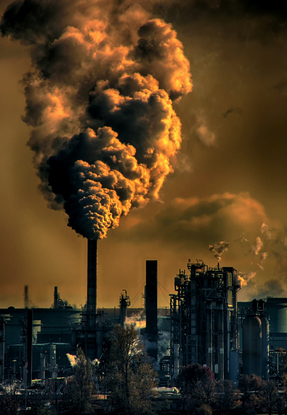 Photo by Chris LeBoutillier on Unsplash Photo by Chris LeBoutillier on Unsplash The Big Five evidence recorded high emissions of pollutant gases, habitat degradations, over-exploitation of the natural resources, emerging diseases, invasive species, and drastically declining species populations. All of these crises are directly or indirectly spurred by human activities. Further, deforestation, overfishing, illegal hunting, and poaching activities take a toll on the species. All such activities annihilate biodiversity and destabilize our ecosystem. Habitat fragmentation and population decline are described by Gerardo et al. as “Biological Annihilation.” They found that about 177 vertebrate species have gone extinct in the period between 1900 and 2015. Of these, about 30% were lost for shrinking ranges, and another 40% experienced population decline. However, a most recent 2020 study highlights that of about 30,000 species of terrestrial vertebrates listed as endangered by the IUCN Red List of Threatened Species, they found 515 species with less than 1,000 individuals. They are left at the brink of extinction. The declining species population is a serious threat to all civilization. Since 1900, the 77 vertebrates species (48 mammal and 29 birds species they studied) that are on the brink of extinction hold an average of 95% and 94% geographical range loss (across Europe, Africa, Middle East, Australia, and North America). In the past, the list had species with obscure habitat ranges, but that’s not the matter any longer. The Earth has lost about 70 percent of all vertebrate individuals since 1970, including large and conspicuous vertebrates, invertebrates, and even insects. Species like Clarion wren, Espanola Giant tortoise, and harlequin frog have already reached their tipping point. Comparing the current global extinction rates to the background rates of global extinctions (estimated lifespan of species during non-mass extinction period ranging from 0.2 million to 16 million years) is a significant indicator of the extinction underway. The rates for mass extinctions are about 1000 times higher than the gradual extinction. The average extinction rate is valuated to be one million to ten million years. In other words, the species that are now extinct would have otherwise lived for another 10,000 years in a normal evolutionary life cycle. At the current trajectory, the world would be facing mass extinction in less than a millennium. However, a researcher from Oregon State University, Corvallis, argues that human-induced events amount to the extinction of about 1.5 species per year over the last 500 years. And that is compensated by the speciation (emergence of new species) during this period. Professor Georgina Mace from University College London also emphasizes that a declining trend in population is also an essential factor and the number of individuals in the species. Extinction breeds Extinction... Researchers are also concerned about the domino effect. Gerardo and associates showed that 84% of the 338 species of land vertebrates inhabited the same habitats. This type of habitat is at danger from the Domino effect; the extermination of one Keystone species can affect several other species that depend on it. This also affects the ecosystem stability on which we all rely. Steller’s sea cow is one such example. The irresponsible hunting of sea otters leads to a population boom of sea urchins that feed off the kelp. This sabotages the kelp-eating sea cow. Climate Change and Mass Extinctions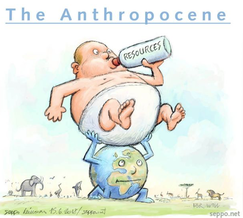 The Sixth Mass Extinction; Anthropocene is on its way. The Sixth Mass Extinction; Anthropocene is on its way. Mass extinction from climate change is a looming crisis. We can reasonably attribute the current period as Anthropocene. It is so because humans have profoundly degraded the Earth’s pristine ecosystems with habitat fragmentation, extraction and burning of fossil fuels, and global warming. The rapidly changing environmental or broadly climatic conditions are human-induced. IPCC AR5 has already warned of a 2 to 5 degree Celsius rise in global temperature in the next century. The uncapped carbon dioxide emissions would soon outpace the pollutant gases’ concentrations from the Siberian Traps. The results would be disruptive. ConclusionWe might undermine the gravity of the crisis as extinction is a slow process, but it is imminent. Though we have not crossed the extinction-tipping point, the biodiversity crisis can completely destroy the ecosystem and human civilization that depends on it for its services. It would hurt the ecology and the economy on Earth. We all wish to tread gradually to the inevitable extinction (part of evolution). In that case, we need to cut down the climate-pollutant gas emissions, stop deforestation and over-exploitation of resources, ban illegal poaching and trading in vertebrate/organic market, conserve species by creating more protected areas, and mitigate climate change. There’s a long way to go, but there’s always hope. Earth will heal and diversify again as it always has; it is just we won’t be there to see it. AuthorNida Riaz is a freelance blogger based in Pakistan. She started writing about her passion for the environment when the world came to a stop in early 2020.
0 Comments
Leave a Reply. |
|
|
(833) CMS-LINE
(833) 267-5463 PO Box 13477 Mill Creek, Wa, 98082 © Conservation Made Simple. All rights reserved.
501(c)(3) Non-Profit, Tax ID#: 82-1646340 Copyright © 2021 Conservation Made Simple |

